By: Michael Waterford
ASC Roadkill Adventure Scientist
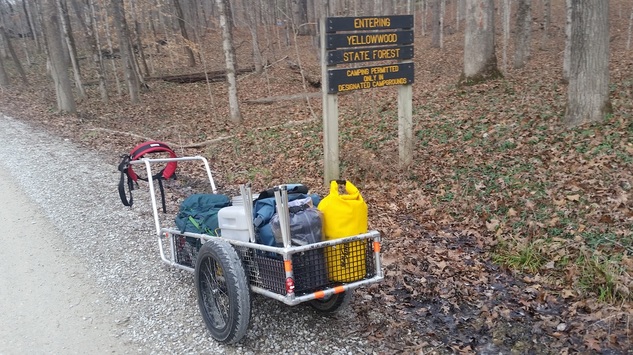
Pulling my gear cart into Yellowwood State Forest on the 6th night of the trip.
Early last year a friend of mine pointed out that despite exploring some of the most remote corners of the map, I had never explored southern Indiana. I realized he was absolutely right and decided last December to “through-hike” my home state while helping local land trusts and collecting data for the ASC Roadkill project.
My first adventure began after graduating from Purdue University in 2009. I landed a job in the Bavarian Alps of Southern Germany and spent the next thirteen months working and travelling in Europe and Asia. I fell in love with stepping out of my comfort zone and started climbing, rafting, backpacking and mountaineering as often as I could.
This experience abroad ignited in me a passion for exploration and a desire to make my expeditions about more than just achieving personal goals. I traversed Mongolia in 2011 and paddled the length of the Mississippi River in 2013 to raise money for various organizations, before putting together The Mountain Folk: a team of adventurers with a similar drive to give back to the places they love.
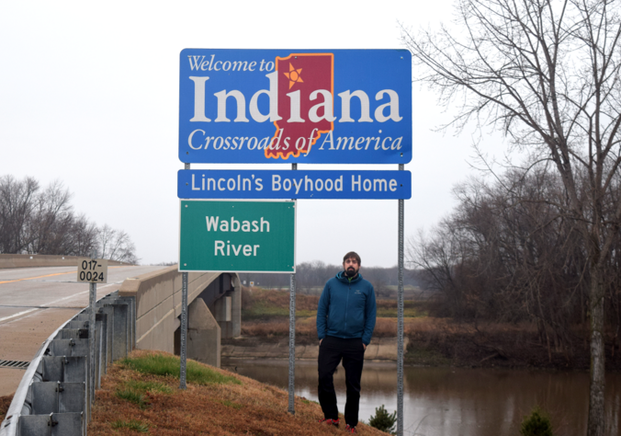
Day 1: crossing the state line from Illinois
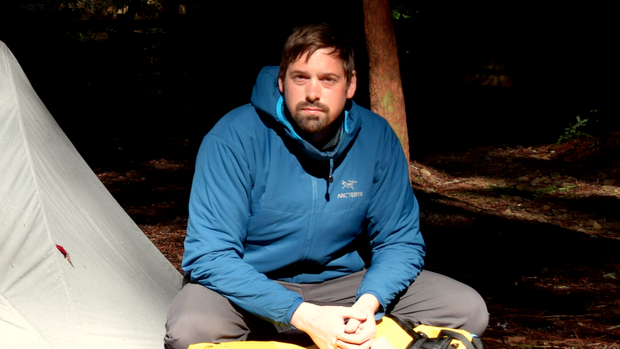
Adventure scientist and explorer Michael Waterford
Hiking across Indiana, I hoped to shed some light on the impact humans have on wildlife while celebrating Indiana’s public lands and the organizations who manage them. I decided I’d trek across the state west-to-east, to document roadkill observations for ASC and to raise funds and awareness for various Indiana land trusts. As soon as I stepped across the line from Illinois I was surprised by my findings. It was December and the first roadkill I stumbled upon was a 3 foot-long black rat snake. Things only got more interesting from there. I found numerous owls, hawks, mice, rabbit, deer, fox, opossum, raccoon, and varying waterfowl. I was astounded by both the diversity of species in a state that most consider a place to fly-over and the sheer amount of roadkill I came across.
All in all, it took me 17 days to cover the 200 miles between borders. I planned my route to pass through as many land preserves as possible and ended up seeing over 20 different properties preserved by 6 different organizations. This route offered me the best camping in the state. My first night in Greene-Sullivan State Forest I camped on the edge of the woods in the corner of a field. It rained the entire night, but being December 2nd, the water froze and covered everything in a thin layer of ice. Opening my tent in the morning I was greeted by a blue and purple sunrise looming above a layer of steam on the frozen field. It was staggeringly pretty. That day I hiked 23 miles and logged more animals than any other day during the trek.
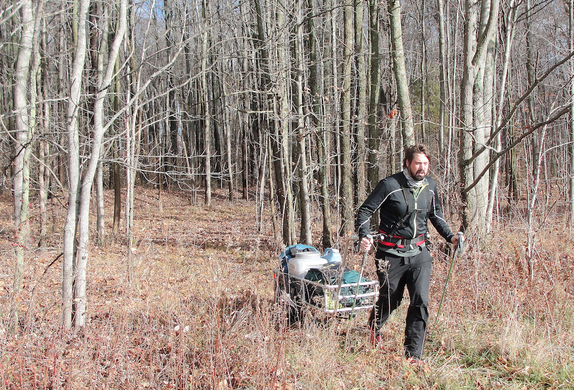
Coming out onto the road from an Oak Heritage Conservancy property.
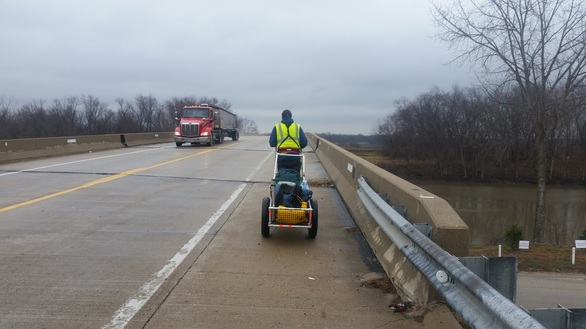
Heading east across the Wabash River on the first day of the trek.
It wasn’t always easy finding a place to camp, though. Sometimes I had to ask local landowners to camp on their property where development has left no more forested land. Often people were nice, and I’d even say I made friends with them. A few even ended up donating to my fundraising efforts, but as one might expect, a few others didn’t appreciate my presence.
One particular day I was walking near a famous Indiana landmark we just call the “trestle,” a red and rusted iron train trestle that expands over a large ravine. It’s a beautiful spot where, in the summertime, the fireflies light up the valley and the screeches and croaks of cicadas and bullfrogs supersede any attempt to speak at a normal volume. I had only reached the trestle when the Sheriff pulled up behind me. Another night, two Police Officers paid a visit to my campsite to inform me that they had received multiple reports of a “strange hippie-type “camping in people’s yards.
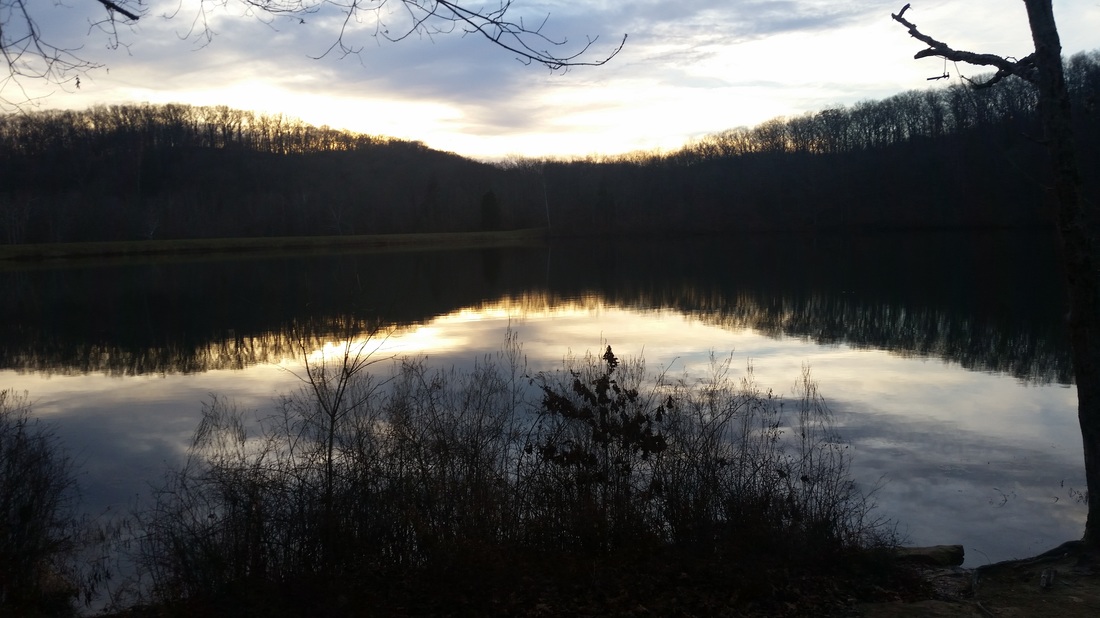
My last night camping, the sun had just set over this small pond in the Southeastern Indiana countryside. Photo: Michael Waterford
To put it plainly, the people of southern Indiana don’t get many long distance hikers much less any hikers pulling a two-wheeled aluminum contraption filled with bags and bottles. To be fair, I’m sure I looked slightly out of the ordinary. I should explain that I pulled the hand-built cart, similar to the sled a polar explorer would use, to train for another expedition. In January, I attempted the first ever solo and unsupported crossing of the Great Basin Desert but unfortunately had to abort due to injury. Sideways glances aside, the cart turned out to be a great way to carry all of my gear.
I gained a new appreciation for Indiana on this hike and to tell the truth, it was one of the more enjoyable adventures I’ve been on. Seeing the land I call home, meeting its people, and giving back to a place I love was truly rewarding but most of all, the trek made me realize that adventure really is waiting just outside your back door.







